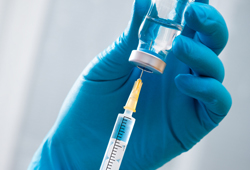 Last week, Health Canada announced that biologic drugs, including biosimilars, will be identified “by their unique brand name and non-proprietary (common) name, without the addition of a product-specific suffix. Both the brand name and non-proprietary name should be used throughout the medication use process so that biologics that share the same non-proprietary name can be distinguished by their unique brand names.”
Last week, Health Canada announced that biologic drugs, including biosimilars, will be identified “by their unique brand name and non-proprietary (common) name, without the addition of a product-specific suffix. Both the brand name and non-proprietary name should be used throughout the medication use process so that biologics that share the same non-proprietary name can be distinguished by their unique brand names.”
The announcement comes after Health Canada recently conducted an online survey on the naming of biologic drugs. The survey proposed three options for the naming of biologic drugs:
Option 1 – Continue the current Canadian drug identification and naming approach [status quo]. Biosimilars, reference biologics, and innovator biologics that share the same non-proprietary name can be distinguished by their unique brand names or Drug Identification Numbers (DINs), however, in some settings only the non-proprietary name is used.
Option 2 – Use of the brand name with the non-proprietary name to distinguish among biologics Both brand and non-proprietary names would be used, so biosimilars, reference biologics, and innovator biologics that share the same non-proprietary name would be distinguished by their unique brand names. Guidelines would be provided on the importance of using both the brand name and non-proprietary name throughout the medication use process and in adverse reaction reporting.
Option 3 – Implement a 4-letter suffix appended to the non-proprietary name All biologic drugs, including biosimilars, reference biologics and innovator biologics, would receive a unique, meaningless 4-letter suffix appended to the non-proprietary name. Products sharing the same non-proprietary name would be distinguished by the suffix. Guidelines would be developed to align with the United States Food and Drug Administration (FDA)’s suffix-based naming convention as much as possible.
Following internal and external stakeholder consultations and analysis of related issues, Health Canada opted for a system consistent with Option 2 above. Health Canada identified the following considerations in coming to its decision: “Brand names are consistent with current biologics naming practice and are already recognized and in use,” “[t]here is no internationally adopted naming scheme to distinguish among biologics that, based on active ingredient, will be assigned the same International Nonproprietary Name (INN) by the World Health Organization,” and “[t]his option avoids any potential perception that different suffixes indicate clinically meaningful differences between a biosimilar and its reference biologic drug.”
By comparison, under the FDA’s final naming guidance the “FDA will designate nonproprietary names that consist of a core name (typically the name for the drug substance adopted by the USANC [(United States Adopted Name Council)]) with an FDA-designated suffix attached with a hyphen. Under this naming convention, the suffix designated in the nonproprietary name for newly and previously licensed originator biological products, related biological products, and biosimilar products will be a distinguishing suffix that is devoid of meaning and composed of four lowercase letters. FDA is continuing to consider the appropriate suffix format for interchangeable products.” FDA considered the following in its decision: (1) facilitation of pharmacovigilance and accurate identification for originator, related, and biosimilar biological products containing related drug substances, and (2) minimization of inadvertent substitution of any such products that have not been determined to be interchangeable.
